“Let’s walk around the 13th arrondissement,” said my sister Christine.
What a good idea! Even though I gravitate toward Paris’s funkier neighborhoods for my blog-reporting walks, this one was mostly unknown territory for me.
But Christine had recently moved there for the second half of her autumn research sabbatical, after two months in Maisons-Lafitte. I’d recently joined a tennis group that played near Les Olympiades, a high-rise district in the heart of the arrondissement. And, most important, a new movie had put the quartier in the news.

The English title is “Paris, 13th District” (trailer here), and the French title is “Les Olympiades.” In the movie, by award-winning director Jacques Audiard, four young people try to figure out life and their relationships with each other while having a lot of sex, all in the 13th. The black-and-white imagery is stunning, the characters original and the actors, some of them unknown, wonderful. They are also multiethnic, at a time when French politicians are engaging in a really ugly debate about assimilation and racism.
“I really think that the 13th is the only arrondissement to have dared to innovate,” Audiard, who lived in this part of town for several years, said in a magazine Q&A. “I’ve shot a lot of films in Paris and I know how much it’s a city that’s an official photograph.” Agreed. No one in his movie window-shops in the Marais, stands in line at Louis Vuitton on the Champs-Elysées or lunches on French onion soup in the Latin Quarter.
The arrondissement has embraced the film, to the extent that the Monoprix grocery store where Christine shops featured a poster highlighting the locations in it. Our plan was to follow this itinerary.
We started on a gray, rainy day at the Bibliothèque Nationale, the often-maligned edifice named for Socialist President Francois Mitterrand. Indeed, there was something rather Soviet about the four tall glass-walled buildings. It was hard to find the entrance from the raised plaza connecting the towers, for one thing. The garden appeared to be inaccessible to humans.
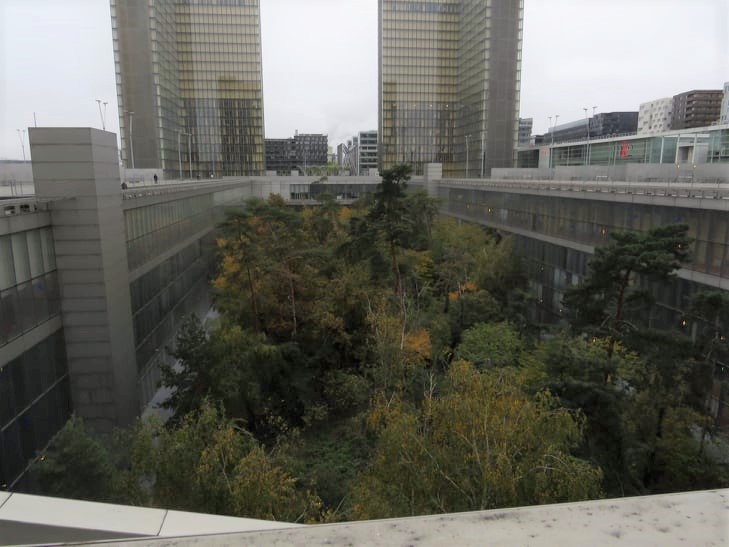
Photo: Christine Swardson Olver
When the library first opened in 1998, the sun coming through the glass threatened to cook the books and protection had to be installed. Sunlight wasn’t a danger the day we were there.
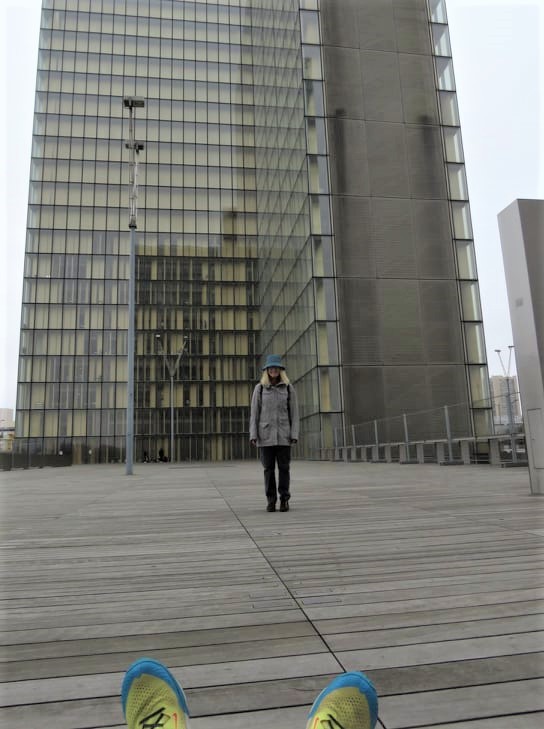
Photo: CSO
The plaza wasn’t all dreary, though. Two different dance groups were using it to rehearse.
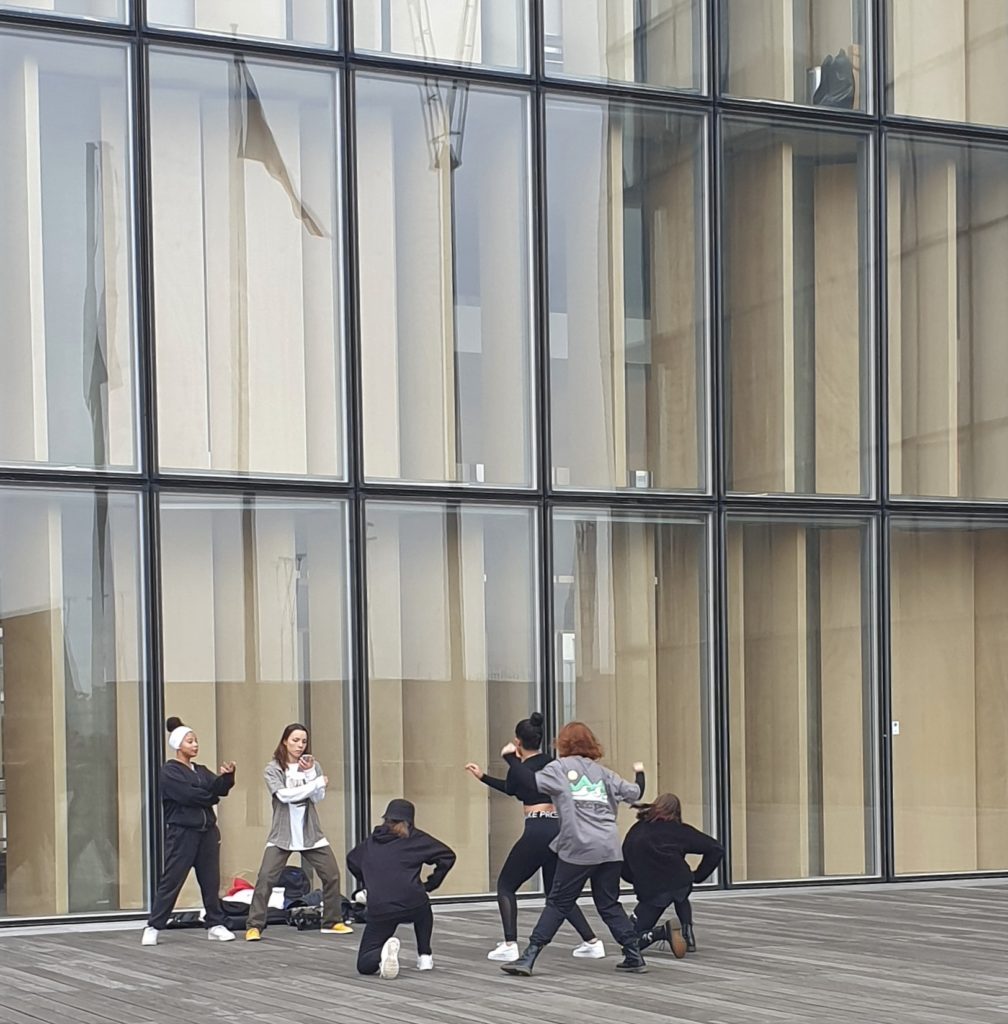
That was a clue to one of the best parts of the 13th: Its youth and energy. The streets are filled with young people around the Olympiades area, many of them students at the local branch of the University of Paris. It is an example of modern French architecture, of which the 13th has quite a few.
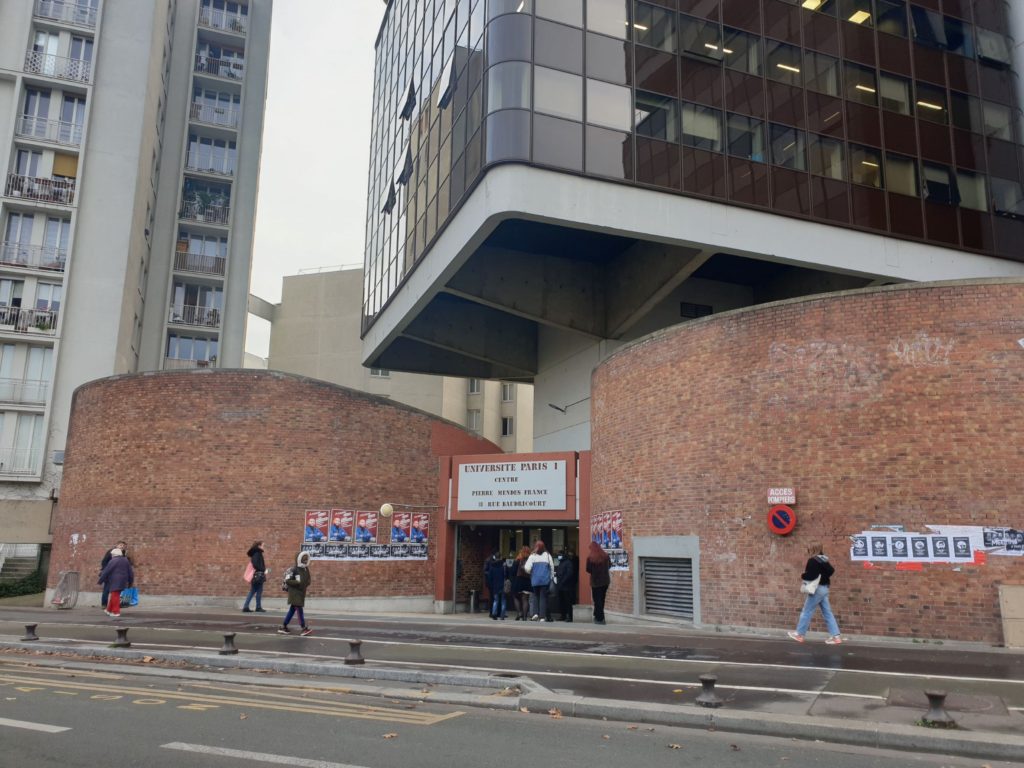
When asked what excited him about the 13th, for instance, director Audiard mentioned the Tours Duo, two asymmetrical skyscrapers designed by Jean Nouvel. It’s not a look – tumbling steel Legos come to mind — that pleases everyone, and the gray weather didn’t help.

Photo: CSO
We saw more color as we walked along the Boulevard Vincent Auriol under the elevated No. 6 Metro line. We had arrived at what appeared to be a kind of market, with bags and boxes, tightly packed, arranged all along the sidewalk. We were delighted to have discovered a local scene on our own and not from the film.
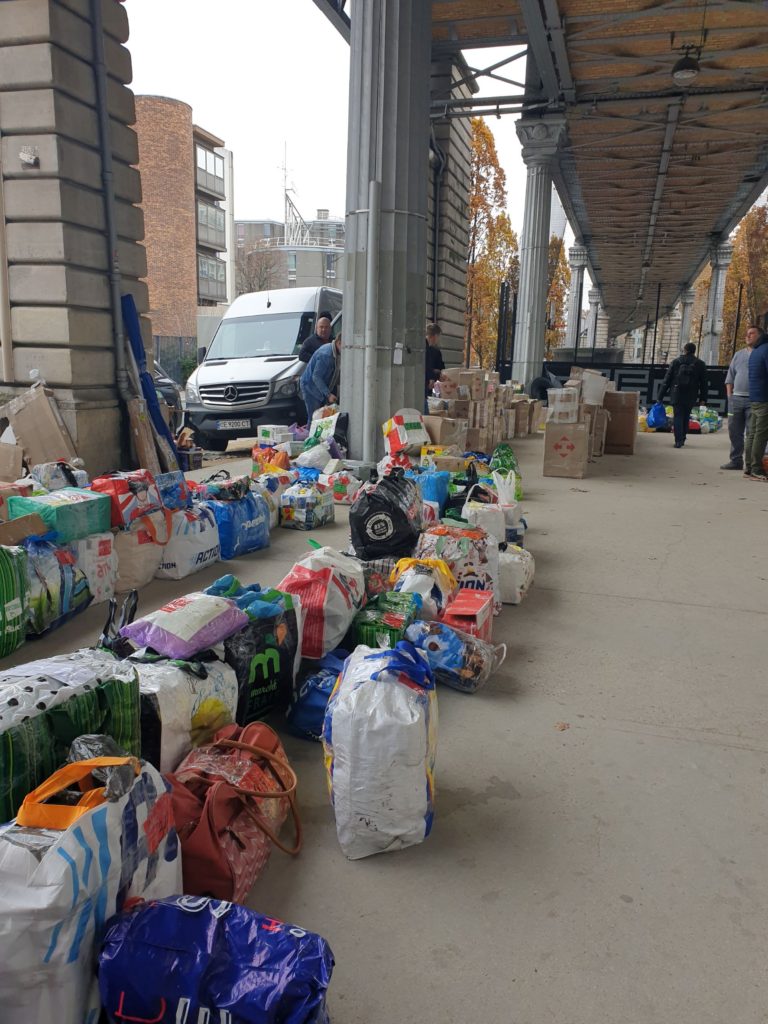
But none had prices on them and no one seemed to be buying or selling. Also, the writing on them was Cyrillic. I speculated to Christine that it was some kind of informal goods-transit service between Paris and, say, Russia.
I wasn’t too far off: A journalist friend who lives in the neighborhood confirmed the concept but said the exchanges mostly serve Ukraine.
“Expats send things that are hard to find in Kiev (mostly consumer items) and receive things hard to get here,” he wrote. “It is a fascinating operation, using nothing bigger than vans and serving only individuals.”
Indeed, we had noticed the vans.
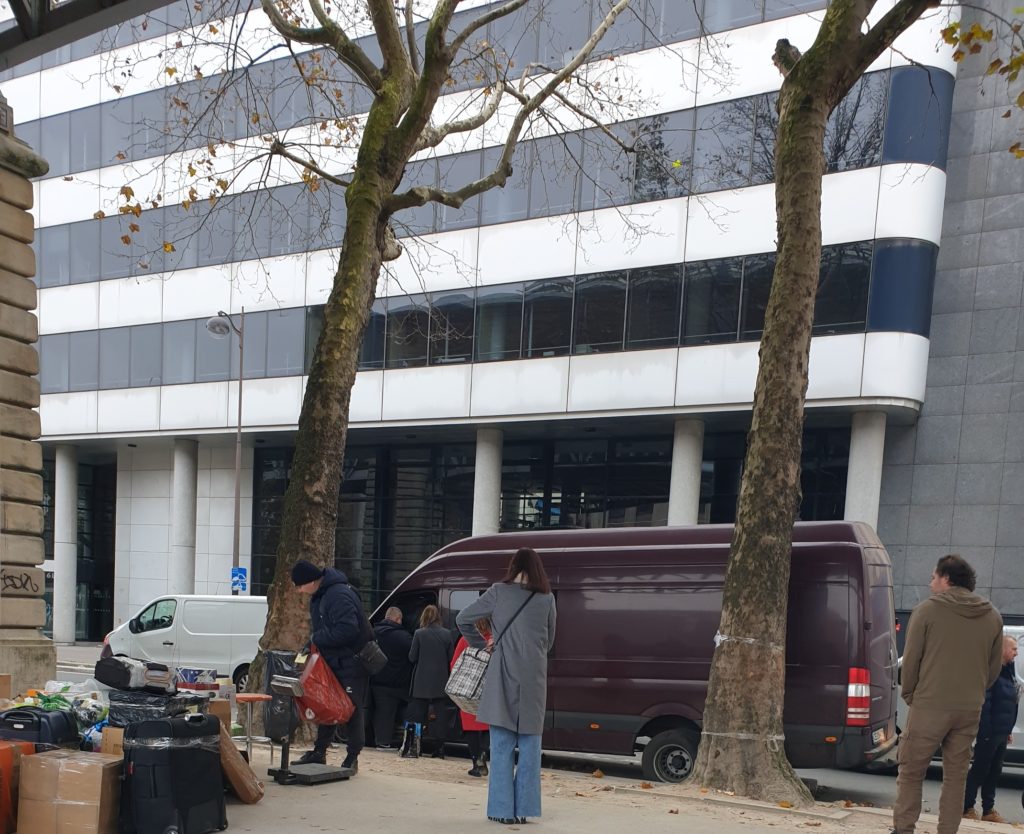
Speaking of color, by this time, we weren’t far from Chinatown, more accurately known as the quartier Asiatique. There’s another in in Belleville, in the 20th arrondissement. Both are home to people of Chinese, Vietnamese, Laotian and Cambodian backgrounds; the one in the 13th is said to be the largest Asian community in Europe, with 50,000 people of those ethnicities living there.
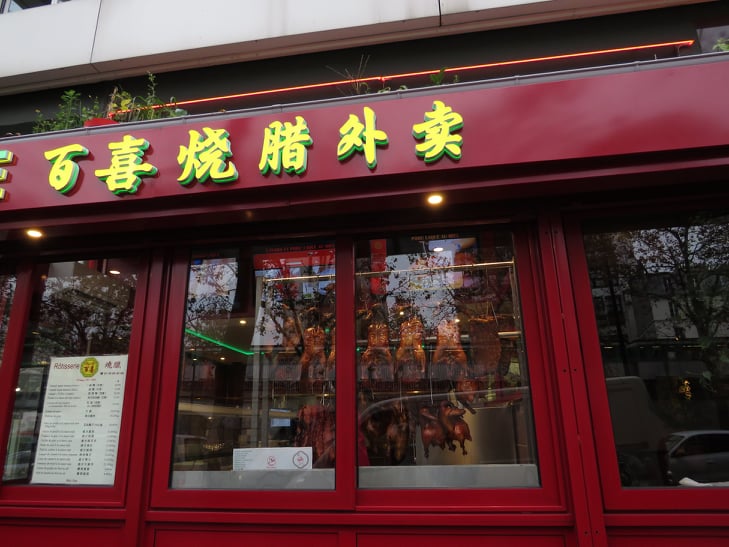
Photo: CSO
The lead character in “Paris, 13th District” is a young ethnic-Taiwanese Frenchwoman, played by 21-year-old French actress Lucie Zhang — who herself was born in the arrondissement. In the film, she struggles with her Chinese and French identities in a way that avoids the usual clichés.
Her character, by the way, is named Emilie but it goes without saying that the film, based on three graphic short stories, has nothing in common with the (widely derided by longtime Paris expats) TV series “Emily in Paris.” I’d love to see that Emily visit here.
A continuing highlight of our walk were the building murals, several of which also turn up in the movie. We saw them everywhere (except on the glass high-rises). The subjects varied but the colors were always vivid. Many were in comic-book style.
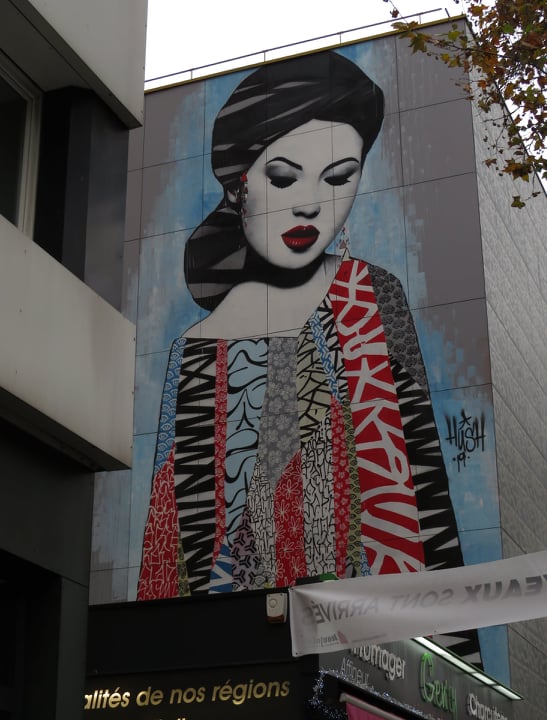
Photo: CSO

Photo: CSO
We finished with a late lunch near Christine’s place of work and a vow to keep looking for the unusual, the exceptional and the out-of-the-way treasures of Paris, whether black-and-white, gray or in color.
Planted in Paris is taking a break and will return in the New Year. Happy holidays, all!

What a lovely post full of curiosity! Karen and I are headed to the 13th tomorrow… HAPPY HOLIDAYS!
Thanks James, and same to you! Allbest.